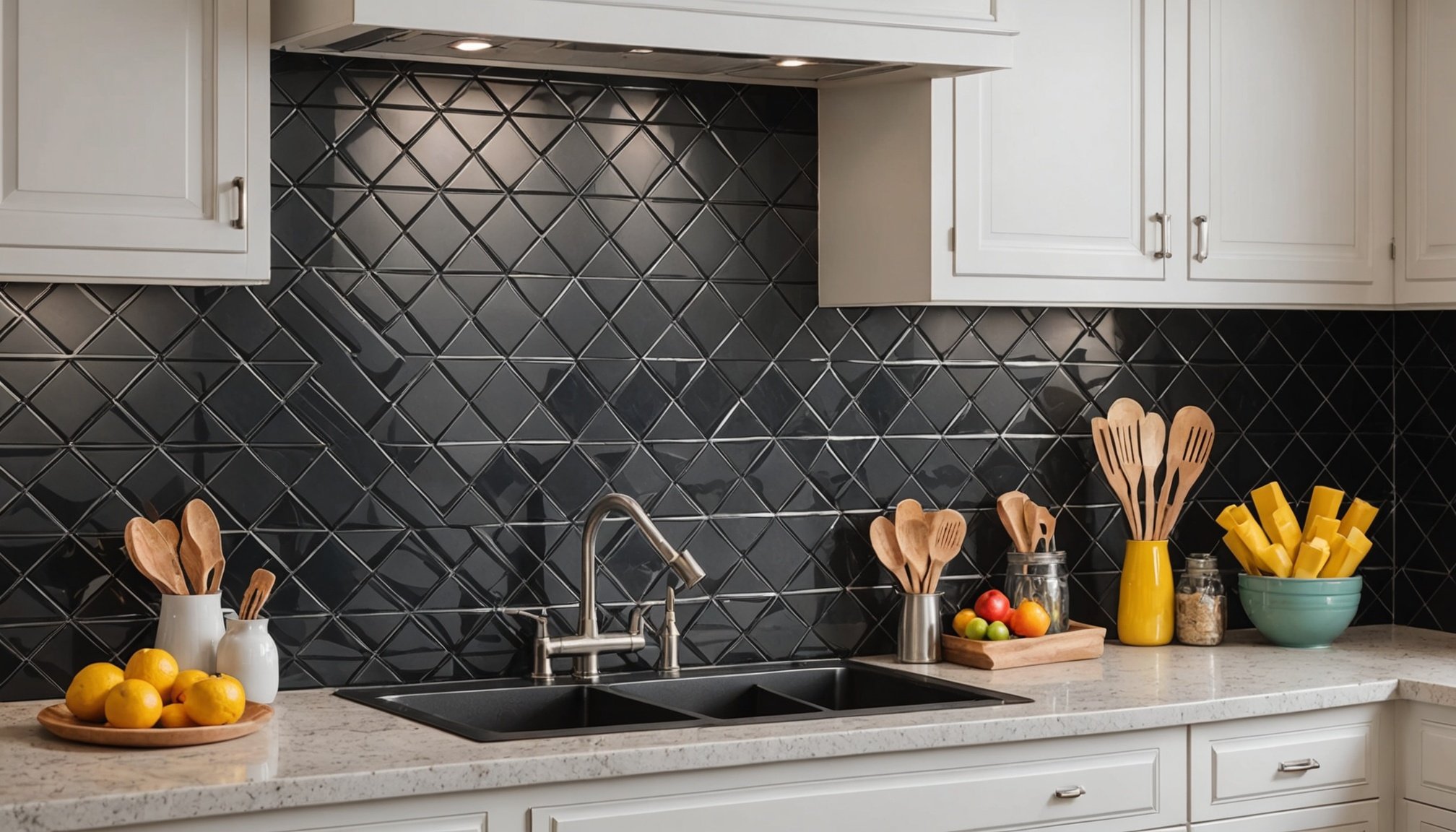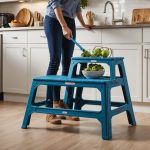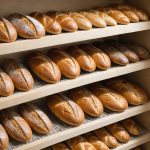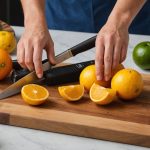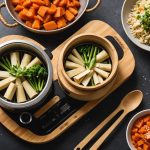Overview of Mold-Resistant Backsplash Materials
When designing a kitchen, choosing the right mold-resistant backsplash is crucial for both functionality and aesthetics. These materials are specifically formulated to inhibit mold growth, ensuring a safe and hygienic environment. Mold-resistant backsplashes are not only ideal for maintaining cleanliness but also add aesthetic appeal to your kitchen space. They come in a range of styles, textures, and colours, enabling homeowners to enhance their kitchen’s visual appeal while prioritising cleanliness.
The hygienic materials used in these backsplashes are easy to clean, with surfaces less prone to absorbing moisture. This is essential in the kitchen, where spills and splashes are commonplace. In addition, mold-resistant materials help in reducing allergens and bacteria, promoting a healthier living space. These backdrops serve as a design focal point, blending practicality with visual beauty. Choosing the right backsplash can elevate a kitchen’s style and ensure durability against everyday wear and tear.
Have you seen this : Revolutionize your modern kitchen with the benefits of touchless cabinets
In conclusion, incorporating mold-resistant backsplash materials in kitchen design offers significant hygienic benefits while contributing to the overall aesthetic appeal. Their versatility ensures they complement various design preferences, making them a popular choice for modern kitchens.
Top Mold-Resistant Materials
Choosing the right kitchen backsplash involves considering both functionality and design. Various mold-resistant materials offer unique benefits, ensuring a clean and visually appealing space. Here’s a breakdown of popular options:
In parallel : Revolutionize your modern kitchen with the benefits of touchless cabinets
Glass Backsplash
Glass is an excellent choice due to its non-porous nature, preventing mold growth effectively. It offers sleek, modern aesthetics that can enhance any kitchen design. Glass surfaces are easy to maintain, simply requiring regular cleaning with mild detergents to maintain their shine and prevent grime build-up.
Ceramic Tile
Ceramic tiles are another top pick as they naturally resist moisture and mold. Available in a wide range of designs and patterns, these tiles make it easy to customise the kitchen space. Their easy installation process and durability, combined with routine cleaning, can keep your kitchen pristine.
Stainless Steel
Stainless steel stands out for its contemporary look and resilience against mold. Its smooth, non-porous surface ensures minimal upkeep, needing just occasional wiping with gentle cleansers to maintain hygiene.
Stone Surfaces
Natural stone surfaces, treated for mold resistance, bring an organic texture and visual appeal. Proper sealing is necessary to enhance their longevity and beauty, ensuring they remain a stunning kitchen feature for years.
Comparative Analysis of Materials
Choosing the right mold-resistant backsplash involves weighing various factors such as durability, cost, and design compatibility. It’s essential to understand how each material performs to make an informed decision.
When considering durability, stainless steel offers exceptional resilience, standing up well to daily kitchen use without showing signs of wear. Ceramic tiles are also known for their robustness, capable of withstanding the rigours of a busy kitchen environment. Glass surfaces provide a sleek, modern finish but require careful handling to avoid chips or cracks. Stone backsplashes, while offering unique textures, need regular sealing to maintain their integrity.
In terms of cost, ceramic tiles often represent a more budget-conscious choice compared to natural stone or stainless steel. However, investing in these higher-end materials might pay off in the long run due to their longevity and timeless appeal.
Aesthetically, each material offers distinct styles to suit different kitchen designs. From the contemporary flair of stainless steel to the organic charm of treated stone, homeowners can find a mold-resistant backsplash that complements their desired theme, ensuring both beauty and practicality.
Maintenance and Hygiene Tips
Proper backsplash maintenance is crucial for preserving both the aesthetics and hygiene of your kitchen. Regular cleaning helps prevent mold growth, particularly in moist environments like kitchens. A simple solution involves using mild detergents and water to wipe down surfaces regularly, ensuring any spills are immediately cleaned up to avoid water absorption.
Different materials require tailored hygiene practices. For glass backsplashes, gentle cleaners are ideal, while ceramic tiles benefit from occasional scrubbing in grout lines to prevent buildup. Stainless steel needs non-abrasive cleansers to maintain its sheen, while natural stone demands resealing every few years to preserve its texture and prevent moisture penetration.
Explore various cleaning techniques: microfiber cloths are effective for a streak-free finish on glass, whereas soft-bristled brushes can help with detailed areas around tiles. Be cautious with cleaning products, avoiding harsh chemicals that could erode certain surfaces.
To maintain a hygienic kitchen, consider investing in specialized products like anti-mold sealants for porous materials or stainless steel polishes that resist fingerprints and water spots. By implementing these tips, you can significantly prolong the life of your mold-resistant backsplash and keep your kitchen in top condition.
Installation Considerations
When it comes to backsplash installation, understanding your options can significantly impact the kitchen’s final appearance and functionality. Opting for DIY installation can be a budget-friendly route, allowing homeowners to personalise their kitchen space while saving on labour costs. However, this approach requires a certain level of skill, especially when working with delicate materials like glass, to avoid damage.
Alternatively, professional installation guarantees precision and can often result in a neater finish. Professionals are trained to handle various materials, from ceramic tiles to natural stone, ensuring a seamless application that enhances your kitchen’s aesthetic appeal.
Key steps in the installation process:
- Proper measurement and cutting to fit the specific dimensions of your kitchen.
- Appropriate surface preparation, including cleaning and levelling.
- Secure fixing of the backsplash to the wall using suitable adhesives.
Avoid common mistakes such as incorrect measurements, neglecting surface preparation, or using the wrong adhesive, as these can lead to poor results. Whether choosing a DIY route or hiring a professional, understanding these considerations ensures a durable and visually pleasing mold-resistant backsplash.
Cost Considerations
When considering a kitchen renovation, understanding backsplash cost analysis is essential to make informed decisions. Factors affecting the cost of backsplash materials include the type of material chosen, the complexity of the design, and the installation method. For instance, premium materials like natural stone or stainless steel tend to be more expensive due to their quality and longevity.
If budget constraints are a concern, consider more budget-friendly options such as ceramic tiles, which offer a variety of styles and colours at a reasonable price. Additionally, glass tiles can provide an elegant look without breaking the bank, especially if you opt for smaller areas or accent projects.
Evaluating the potential return on investment is crucial when choosing backsplash materials, as upgrading can significantly boost the overall aesthetic and resale value of your kitchen. Durable, mold-resistant materials like glass and stainless steel not only ensure a clean environment but their timeless design appeal also adds lasting value. Investing wisely in a quality backsplash ensures both functionality and financial benefits over time.

